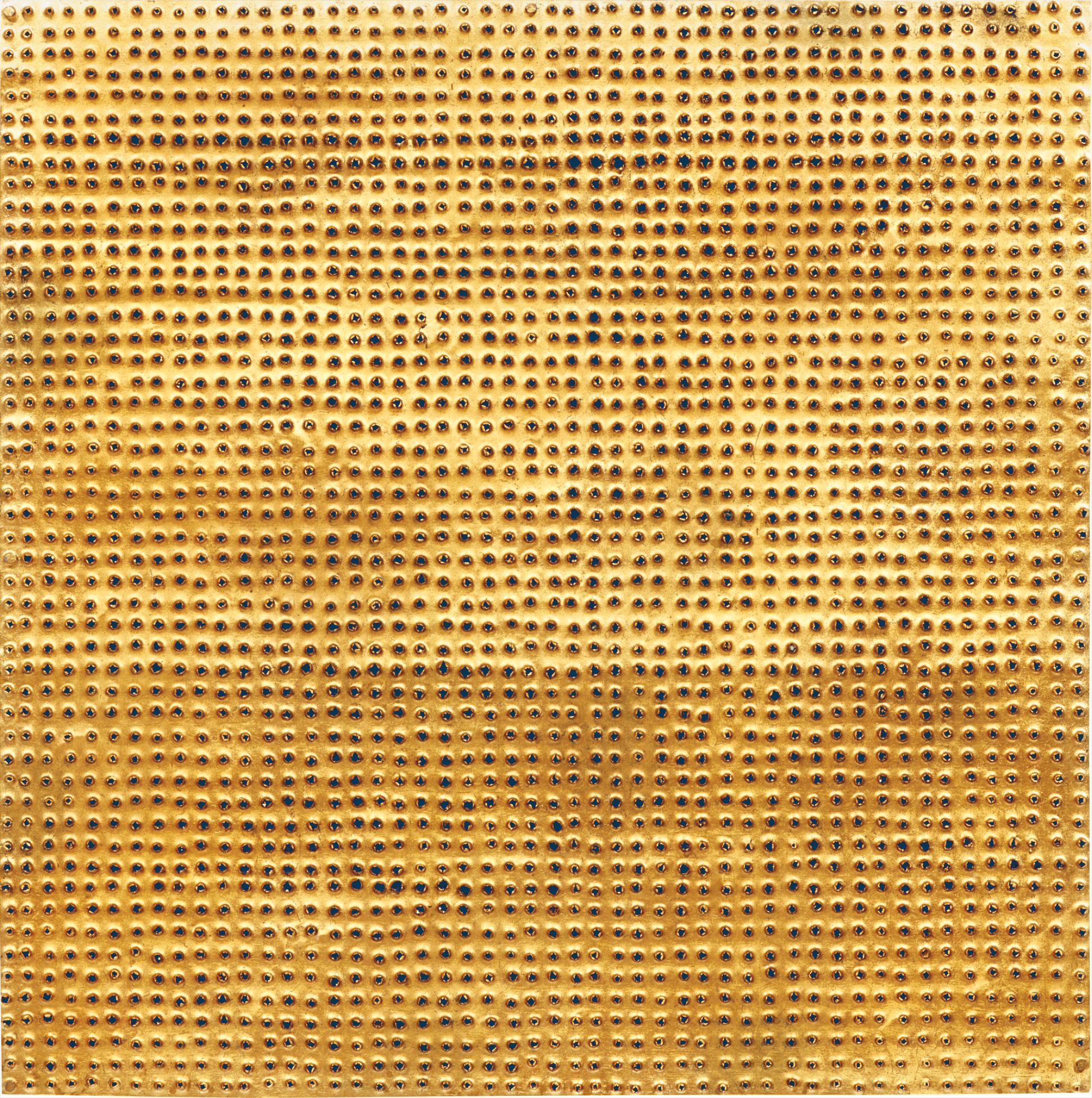



17
Mathias Goeritz
Mensaje
Full-Cataloguing
During this time things began to change in Mexico, as a myriad of artists, like himself, fled Europe to find refuge as a consequence of the successive humanitarian crises caused by the Spanish Civil War, WWII and the Holocaust. Thus, when Goeritz arrived in Mexico in 1949, change was already afoot thanks to other émigré artists, such as Wolfgang Paalen, Luis Buñuel, Remedios Varo and Leonora Carrington, amongst others.
Goeritz’s first Mensajes, created in 1959, marked a paradigm shift within his own oeuvre as it was during this time that he stopped painting and drawing. He had an almost desperate eagerness to create three-dimensional works, producing them with any material that fell into his hands, including stone, wood, varied metals, cork and scrap. He first began using slabs of wood covered with gold leaf or metal and would puncture holes and nails obsessively into them, creating brutal textures. After exploring this form, he started producing Mensajes, much like the present lot where the perforations were now arranged in a symmetrical order and with methodical precision. These perforations undoubtedly reflected his state of mourning and deep desolation due to to the death of his ex-wife, Marianne Gast. In truth, Goeritz did not consider these works of art per se; rather, he believed these works were replacing aesthetics with ethics, a concept that was of the outmost importance to the artist. The manifestation of intensity in works such as the present lot also reflected the mental phase of not only desolation but a “spiritual imperative,” as aptly described by Lily Kassner (L. Kassner, Mathias Goeritz, Editorial a Toda Máquina S.R.L., Mexico, 2014, p. 139). Hence, when contemplating this mesmerizing work, we are once again reminded of the physical and conceptual intricacy of Goertiz’s oeuvre. At a personal level the aesthetics of the present lot convey powerful emotions and spirituality that, interestingly, also helped him consolidate a particular brand of modernist abstraction within Mexico. Additionally, and more importantly, his works not only helped place Mexican art at the forefront of Modernism, but would influence future generations of conceptual artists.
Mathias Goeritz
Mexican | B. 1915 D. 1990German-born artist Mathias Goeritz studied Philosophy and Art History in Berlin. He immigrated to Mexico in 1949, by which time he had already built a career as a modern artist and architect. He was influenced by the European artistic tendencies of the time, from modernist movements such as Group Zero to artists including Yves Klein and Lucio Fontana.
Goeritz's transference of knowledge exposed Mexico to the larger international art world, thus greatly contributing to the trajectory of Mexican art. He developed the concept of emotional architecture — where architecture is not overpowered by functionality but engages humankind with beauty, creating an emotive response. This concept would give artists in Mexico an alternative to the overarching influence of the national mural movement, and is exemplified in one of Goeritz's most significant works, El Museo Experimental el Eco.